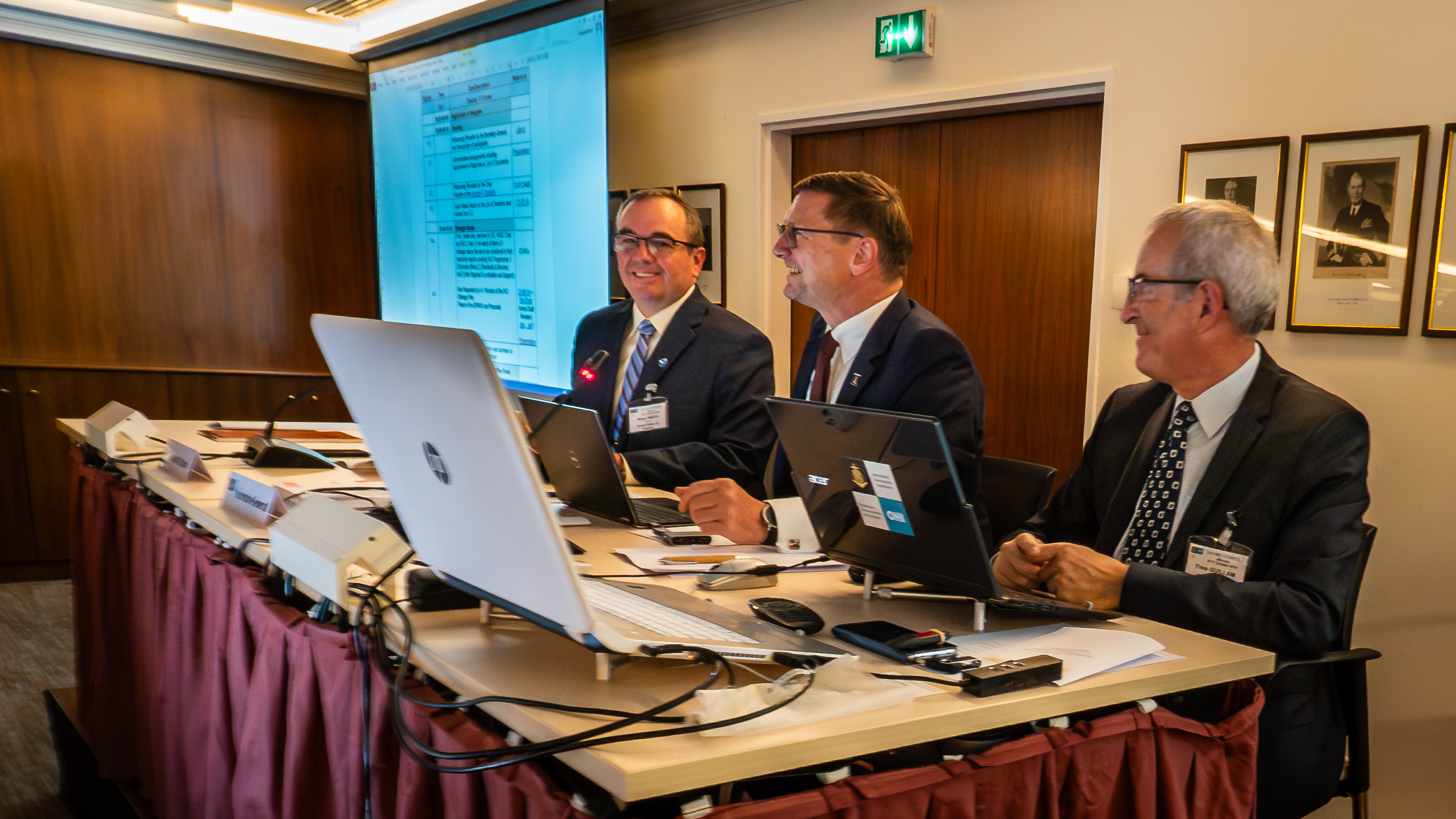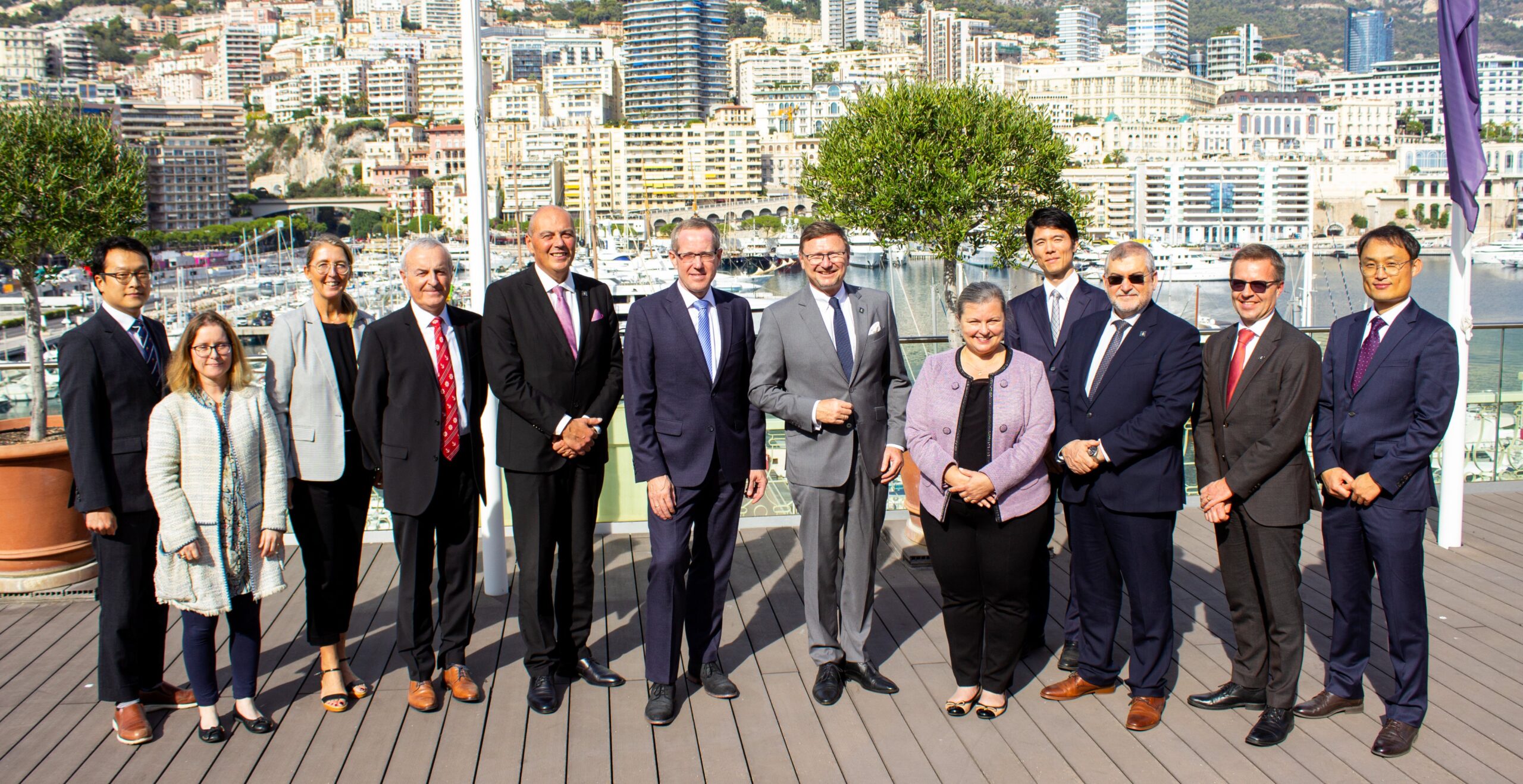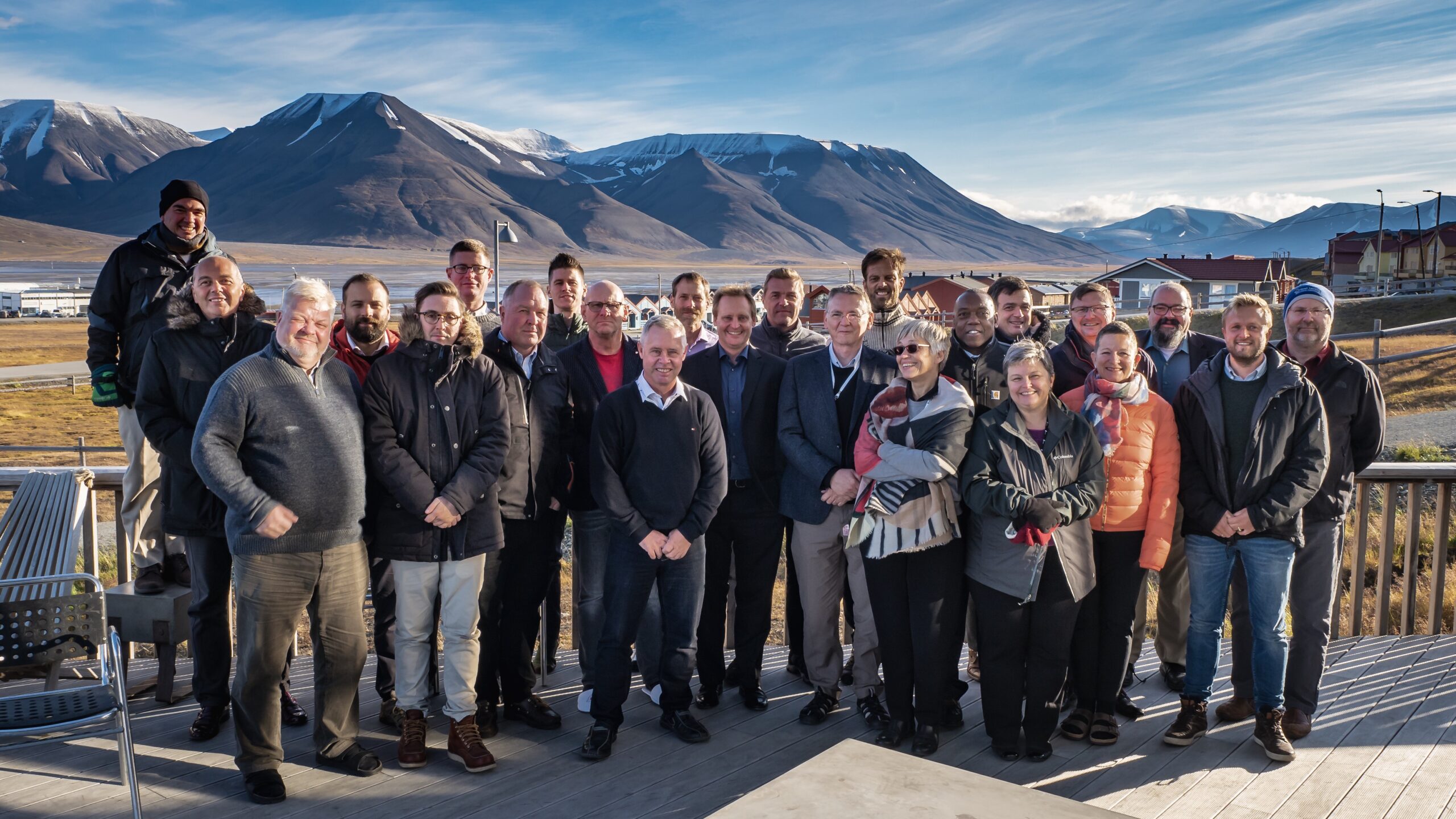1 Introduction
At the Third IHO (International Hydrographic Organization) Assembly in 2023, we were struck by the smooth adoption and broad support for the proposals made by and through the IHO Council (the Council). We consider this to be a signature success of the IHO’s governance structure and of the Council in particular. As insiders and as its first two Chairs, we offer some insights and reflections on the initial years of Council for future Council and IHO Members States.
In 2016 the IHO adopted a revised governance structure which, according to Dr. Parry Oei from Singapore, chair of the 1st Assembly in 2017, “was a bold change in structuring to improve the effectiveness and efficiency of the IHO to better respond to ever changing needs of Member States, stakeholders and technology” (Oei, 2017). The IHO Assembly replaced the quinquennial International Hydrographic Conference and the IHO Council was created to “coordinate, during the inter-Assembly period on a yearly basis, the activities of the Organization within the framework of the strategy, work programme and financial arrangements, as decided by Assembly” (IHO, 2020, p. 8). The Assembly is composed of all the Member States of the IHO. The Council, by contrast, is formed from a combination of thirty Member States chosen on a regional basis and on a basis of hydrographic interest.
2 On the evolving nature of the work
The first Council, established for a term of three years starting in 2017, set the tone for future activities and procedures (Fig. 1). Assembly 1 assigned one major task to the Council (Decision 3): “to conduct a comprehensive review of the Strategic Plan and to provide a draft revised Plan, as appropriate, in time for the consideration of the 2nd ordinary session of the Assembly (A-2)”. By Assembly 2 in 2020, the Council had nine proposals for the IHO Assembly, and another seven for Assembly 3 in 2023 (Fig. 2). From its earliest stages, the Council established itself as a body providing ongoing executive oversight by Member States, accelerating decision processes, and providing a forum to mature proposals for Member States’ consideration.


Council has now taken ownership of the IHO Strategic Plan1. It has delivered a 2021–2026 Strategic Plan, with clear goals recognizing the broadening role of hydrography beyond safety of navigation and the importance of collaboration across hydrospatial and other domains, positioning the IHO to continue to support safety of navigation while responding to a new group of stakeholders. Working with the IHO Secretary-General, the Inter-Regional Coordinating Committee (IRCC) and the Hydrographic Services and Standards Committee (HSSC), it has experimented with the implementation of the strategic performance indicators (SPIs) to monitor progress and promote IHO effectiveness.
The Council has also made significant efforts to start preparing the IHO and its Member States for the S-100 standards implementation. The focus in the decade preceding the establishment of the Council had been on the development of standards within the S-100 family. Recognising that some hydrographic offices were in the early stages of providing services using the recently-approved and draft standards, the Council mobilized and coordinated voluntary efforts to articulate the issues, define potential solutions for transition, and provide recommendations to the Assembly, resulting in a strategy2 to ensure global consistency. The strategy empowered the IHO Secretary-General to begin the process of coordinating these new services with the commercial shipping industry through the International Maritime Organization (IMO). Today (2023), efforts are underway to ensure that by 2026, S-101 Electronic Nautical Charts are available where S-57 standards coverage already exists, and innovative services have been launched by several member states using other standards in the S-100 family.
The Council has brought forward a number of significant proposals to the Assembly including advancing work on gender balance, capacity building and the future of the paper chart. It has exercised oversight on financial statements, budget estimates and the associated annual work programmes, at a time when the IHO Secretariat was faced with renewing both the medical insurance and the pension plan for its employees. Council members have also continued contributing to the perennial deliberations on the definition of ‘hydrographic interest’.
3 On the collaborative nature of the Council
By design, the Council works closely with the IHO Secretary-General, who acts as Secretary to the Council, convenes Council meetings and prepares the agenda.
At its very first meeting, the Council clarified its role with respect to other subsidiary bodies, with the goal of accelerating their work programs through empowerment. The IRCC and HSSC retained their authority on operational and routine proposals, with only proposals with strategic impact being routed through the Council for endorsement before submission to Member States for approval. The Council invited HSSC and IRCC Chairs to attend Council meetings to present their annual strategic priorities and accomplishments. This invitation fostered frank and constructive discussion between the subsidiary bodies, and established a cycle where the Council would provide guidance to the committees, proposals and issues were developed and discussed in regional commissions, committees, sub-committees, working groups and task forces, enabling a broad engagement of Member States and partners in the private sector, academia and other disciplines at various levels before tabling any proposals for formal decision at Council, Assembly, or by circular letter.
The implementation of the IHO Strategic Plan illustrates well how the collaboration between the Council, committees and the IHO Secretary-General improved the effectiveness of the IHO and accelerated its ability to progress. The IHO Strategic Plan and its SPIs were developed during the first Council and approved by Assembly at its second meeting (2020). The second Council, endorsed by Assembly in 2020 with a mandate to 2023, was tasked with monitoring the appropriateness and applicability of the proposed SPIs and amending them as necessary (Assembly 2, Decision 203). The Council agreed on the allocation of responsibility of the new SPIs to the IHO Secretary-General, HSSC and IRCC.
Within the IRCC, the South-West Pacific Hydrographic Commission took a significant step by conducting a gap analysis which raised questions about how to measure some of the SPIs. Other Commissions followed suit, and the IRCC started a series of workshops to bring together Member States, resulting in additional engagement, a better understanding of the Strategic Plan and performance measures and an agreement on how to move forward. By the time the Council reported to Assembly 3 (2023), there had been broad engagement, with appropriate oversight, with only a single SPI from fifteen still requiring adjustment.
Another important avenue for developing proposals was directly through Member States. Because the Council does not have the authority to stand up any working groups, Member States banded together informally to work on a particular proposal intersessionally, for submission to the Council for consideration and decision.
Notwithstanding the Rules of Procedure (IHO, 2023, p. 11) which have provisions for voting, the Council has evolved to be a forum where proposals and issues are discussed in a collegial manner and in practice decisions have been reached by consensus. Part of this success can be attributed to the nature of Council meetings intimate with small delegations and few prepared remarks, ensuring real engagement by participants and the free flow of ideas. During the COVID19 period, the Council relied on virtual meetings to continue its work. Although much continued to be accomplished via virtual meetings, the return to an in-person meeting for the Council meeting 6 in 2022 reinforced the importance of being in the same room to have open and frank discussions at least once a year. We have learned to structure agendas to put difficult issues early in the meeting, leaving enough time to work through issues offline if required, then revisit later once there is informal agreement.
The Council has benefited enormously from having Hydrographic Offices with different profiles: some were primary charting authorities, other offices were just building capacity or represented countries with a large number of registered vessels. Member States not sitting on the Council were welcomed as Observers and in practice treated the same as full members in discussions. This diversity has been essential to support well-rounded discussions as the IHO moves to implement the new S-100 standards and services.
4 On the role of Council Chair – a personal view
The Council Chair position was not well defined at the onset, and it continues to evolve with each new Chair. It was created within a governance structure where the IHO Secretary-General and the Chairs of IRCC and HSSC have well established roles, each with their work programme to deliver. We therefore took on the role with our own leadership style and ideas of what we wanted to do.
From the start we both believed that, elected by Council Members for the triennial Council term, we had a role to represent Member States and look out for our collective interests. We did this in our interactions with the IHO Secretary-General and the IHO Secretariat. We also participated in Finance Committee Officers meetings at which annual financial reports were discussed and endorsed before being submitted to Member States for approval. We carried this role with us when we spoke in public meetings such as conferences, when we interacted with IHO Member States to promote the IHO and Council, to explain the Council decisions, to seek out views on various proposals and to encourage active participation in the IHO. We were both active members of the IHO leadership year-round, and not just there to preside over the annual meeting.
We have worked closely with the IHO Secretary-General, requiring discussion and adjustment. As an example, since the Council was created to provide oversight between Assembly meetings, we had to navigate the degree to which the Council Chair should be involved in IHO operations. Together the Chair and the IHO Secretary-General negotiated such issues, parsed out the work, shared decisions and successes.
The relationship between the Chair of Council and the Chairs of IRCC and HSSC quickly emerged as important: the Council Chair, like a conductor, has the overarching strategic view while the IRCC and HSSC Chairs carry the heavy burden of delivery, engagement, and testing and ground truthing proposals before they are endorsed by Council or Assembly. The HSSC and IRCC chairs were also members of the Council, so they participated in their own right in the strategic discussions. This relationship is so important that even in the depths of the COVID-19 pandemic, in 2021, all three Chairs traveled to Monaco for the hybrid Council 5 meeting to be at the IHO Secretariat to have in-person discussions and better coordinate efforts (Fig. 3).

As Council Chair, we have always sought to remain neutral on issues which came before Council, for example on the topic of the definition of hydrographic interest. We needed to be aware of diverging perspectives amongst Member States, with a view of arriving at a resolution on which we could all agree. We sought to engage our colleagues on Council directly in preparation for the annual meetings and throughout the year to build and maintain momentum, and to ensure that all Member States felt heard at Council. We did this through our letters ahead of each Council Meeting, and through an extensive round of one-on-one meetings or videoconferences. These provided opportunities to ask questions about the readiness for S-100 implementation, and to get some insights on capacity building needs and the language barrier which many countries face when accessing training and considering participation in the IHO. Where feasible, we sought to participate in regional hydrographic commissions, providing us with invaluable insight on regional realities. Looking forward, we feel the Council Chair could play an even stronger role in engaging Member States.
Our Vice-Chairs made modest yet valued contributions to the leadership of Council, and moving forward we would encourage an even greater participation from the Council Vice-Chair. There is plenty of work to go around.
Each of us leaned heavily on our internal staff to prepare for and follow up from meetings, as well to serve as thought partners, sounding boards, and to represent our home national interests while we were serving as chair. Jonathan Justi at NOAA and Douglas Brunt at CHS were absolutely critical to the success of the Council. Since the Council needs to operate independently but in partnership with the IHO Secretariat, these staff roles are invaluable to the success of any Chair.
5 Considerations for future Councils
It would be inappropriate for us to offer any opinions on the content and priorities of future Councils or Council Chairs, but we do offer a few considerations on the role of the Council, and how it can be most effective.
Selection of Chair
The first three chairs have been elected in uncontested elections. Future chairs would be strengthened in their mandates by a competitive election. It is an obvious opportunity to expand for geographic and gender diversity within IHO leadership roles.
Council as a forum for ideas
During our time as Chairs, the Council was most effective when it acted as a group of hydrographic leaders and thinkers jointly addressing difficult issues. While all delegates of course need to represent their own states and offices, most issues under consideration do not require rigid national positions, and the best way ahead will benefit all parties. The small size of delegations and the fluid style of discussions are important to the success of the Council.
Using the Council to its maximum effect
The Council is a powerful agent for accelerating the advancement of the world’s hydrographic offices and the IHO. It needs to be a consistent strategic force. If the Council plays a passive role, progress across the IHO and global hydrography will stall. On the other hand, the smooth running of the Third Assembly points to potential for more substantive discussions and consideration of even more ambitious proposals.
Execution against the plan
The strategic plan developed and refined by the Council is powerful and positions the IHO and the hydrographic offices for increased impact and leadership in coming decades. However, success will not happen on its own. The Council, through its words, deeds, and convening power, has the necessary tools to make the vision a reality.
6 Conclusion
During its first six years, the Council has demonstrated nimbleness in its culture and processes, in leveraging existing IHO committees and working groups to inform strategy and take action at a time when the pace of change is accelerating, and expectations of stakeholders are growing. The Council has demonstrated its ability to develop and mature proposals between Assembly meetings, enabling the IHO to be more efficient. With the advent of the S-100 standards implementation, the Council will be well positioned to bring to the Assembly difficult questions and seek guidance on topics such as S-100 services distribution.
It was an honor for each of us to serve as Council Chair. Our mandates were interesting and rewarding. They provided great insight into how the IHO works and an ability to influence the direction at an extraordinary time in the history of the IHO, as we collectively prepare for electronic navigation. We Member States are the IHO, the IHO Secretariat is there to support us and help us to deliver, but it is through the Member States that the IHO programme is achieved. No single country can make the transition to S-100 alone, we need to leverage the minds and the experience of all our IHO colleagues. Every country counts as we collectively work to provide hydrographic data, products and services to make navigation as safe and efficient as possible globally.
We hope that with time and experience, many countries will come forward with candidates for Council Chair. We can assure you there is no need to be a member of the Arctic Regional Hydrographic Commission to become Chair of Council (Fig. 4)!

References
Oei, P. (2017). Address by the Chair of the Assembly. 1st Session of the IHO Assembly, Report of the Proceedings, 1, 41–42. International Hydrographic Organization, Monaco. https://iho.int/ uploads/user/pubs/periodical/P6A1_2017VOLUME1_ENG.pdf (accessed 29 September 2023).
IHO (2020). Basic Documents of the International Hydrographic Organization. IHO Publication M-1, Edition 2.1.1. International Hydrographic Office, Monaco. https://iho.int/uploads/user/ pubs/misc/M_1_EN_20102020_FINAL.pdf (accessed 29 September 2023).
IHO (2023). Rules of Procedure of the IHO Council. International Hydrographic Office, Monaco. p. 11. https://iho.int/uploads/user/pubs/misc/M1_Separatedocs/RoP_Council_EN_ APRIL2023.pdf (accessed 29 September 2023).
- https://iho.int/en/iho-strategic-plan-and-work-programme (accessed 29 September 2023).
- https://iho.int/en/s-100-implementation-strategy (accessed 29 September 2023).
- https://iho.int/en/circular-letters-documents (accessed 29 September 2023).

